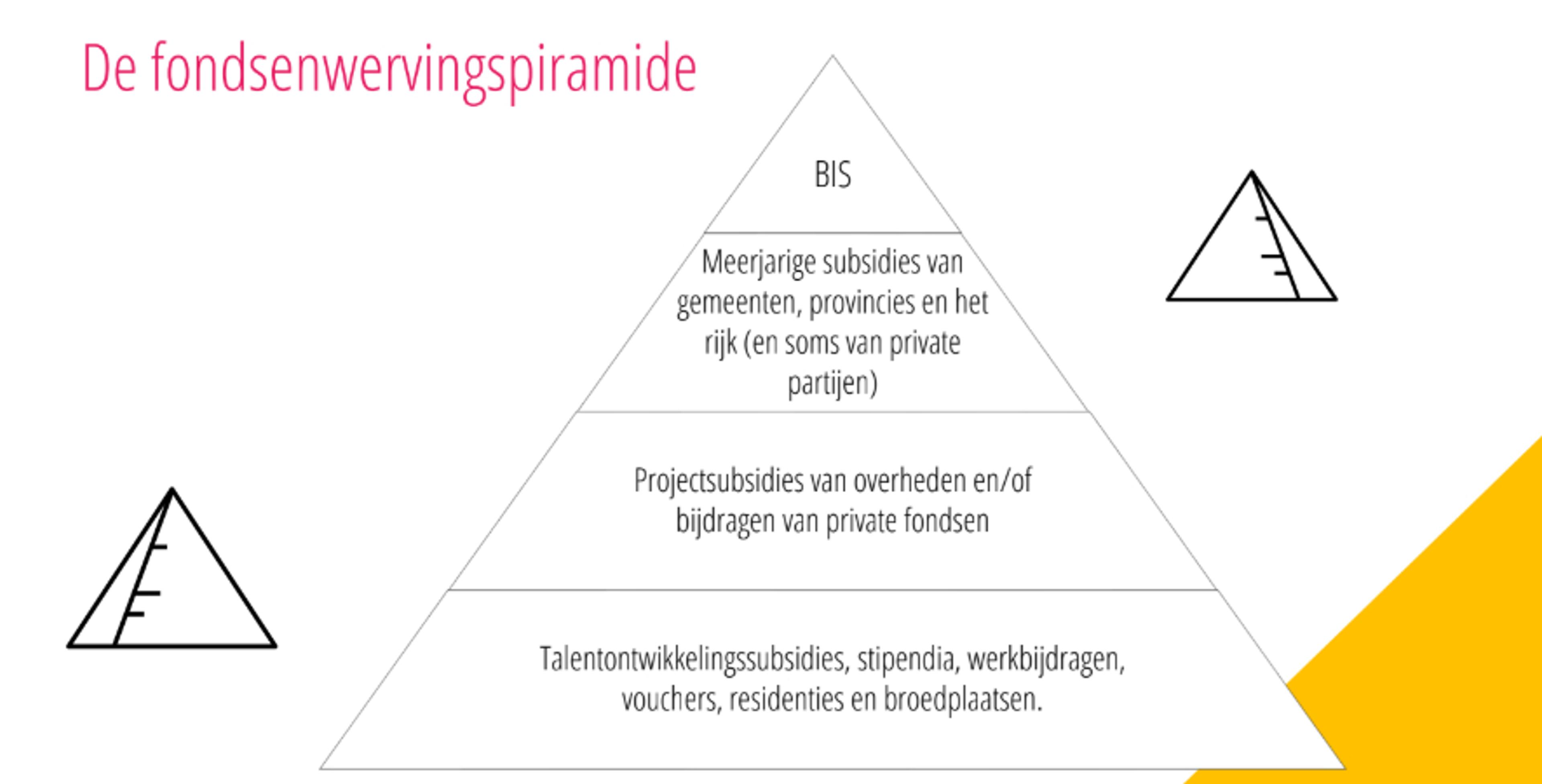
Many creators and cultural organizations start their practice with incidental funding: from project to project. That is a logical and often necessary first step, but it makes you vulnerable. Sustainable funding means securing income in the longer term, for example through long-term subsidies, structural partners or a permanent place in policy programs such as the Basic Infrastructure (BIS). In this article we explore how to go down that road, step by step.
From project to structure
When starting a project, sometimes you still arrange the finances as a self-employed person, through a loose collaboration or with the help of a sponsor. But many creators also choose to establish a foundation or association at an early stage. If you want to grow and build structural funding, a formal organizational structure will help you along. With a legal form such as a foundation or association you can more easily apply for funds and subsidies, hire staff and enter into long-term collaborations. Check here what legal forms there are and discover what suits you best.
Don't have a formal organization yet? There are also funds you can turn to as an individual creator or collective without a foundation.
- Groeispurt: for Nijmegen creators.
- Stroomversneller: for Arnhem creators.
- Night Pulse: for Nijmegen initiatives within night culture.
- Firestart Fund: for employing a fundraiser.
💡Tip: also check out the overview of grants and funds for the region.
Multi-year work and the BIS
Many projects start with a one-time grant. Then you can progress to multi-year support, for example through the four-year schemes of municipalities, provinces or the Performing Arts fund . The highest level of structural funding is a place in the Basic Infrastructure (BIS): a select group of institutions of national importance that are structurally funded by the Ministry of Education, Culture and Science. The BIS includes institutions that have an essential function within the cultural landscape, such as companies, museums and festivals, and that receive long-term financial support for this purpose.

But beware: multi-year funding often means higher budget, impact and reporting requirements. It also entails more responsibilities, such as transparent accountability and clear decision-making according to the Culture Governance Code. If you want to take this step, be aware of the balance between substantive ambitions and organizational capacity. What does it ask of you as creator, organizer or team?
Risks and long term
Sustainable finance means looking ahead. What risks do you run as an organization and how do you deal with them? Taking risks is part of the job, but you can manage them better. Start by identifying the most important risks that could affect your organization, such as the loss of subsidies, changes in policy or shifts in audience behavior. Then map them out clearly, for example with a risk matrix, and estimate the probability and impact. For each risk, consider whether you want to avoid it, reduce it, transfer it (e.g. through insurance) or accept it. Keep monitoring your risks and discuss them regularly within your organization and with your board or supervisory board.
📖 Definition: What is the difference between a board and a supervisory board? The board makes decisions and implements policies, while the supervisory board checks to make sure they are done properly and advises the board. In short: the board manages, the supervisory board supervises.

The board of a foundation
In this article, we will discuss the governance of a foundation. This is because when you choose the foundation as your legal form, which is very common in the cultural sector, you need to form a board.
It is also smart to follow larger developments in cultural policy. Consider topics such as inclusion, digitization or participation; these may present opportunities (or demands) for your funding approach. Sustainable funding is ultimately about strategically building a stable foundation. Whether you're a solo-maker or a growing organization: by developing your structure, budget and vision for the long term, you're working toward more security as well as more impact.
💡Tip: Tools such as Cultuur+Ondernemen s risk matrix support risk identification and monitoring.